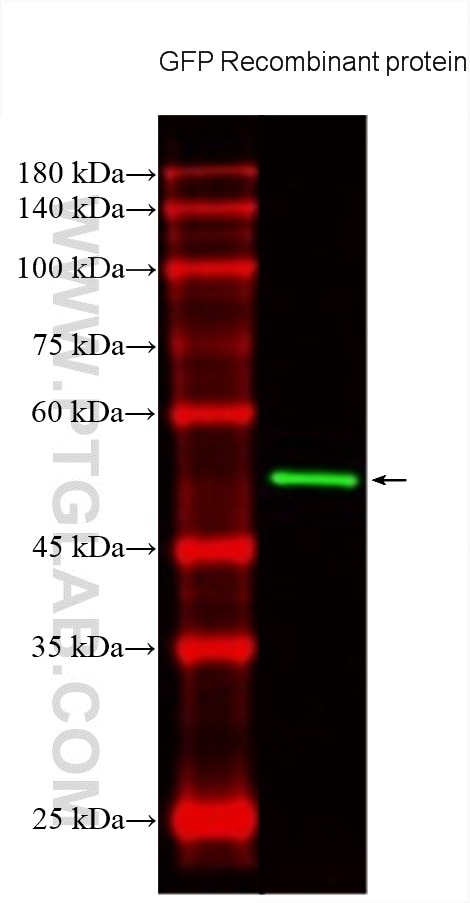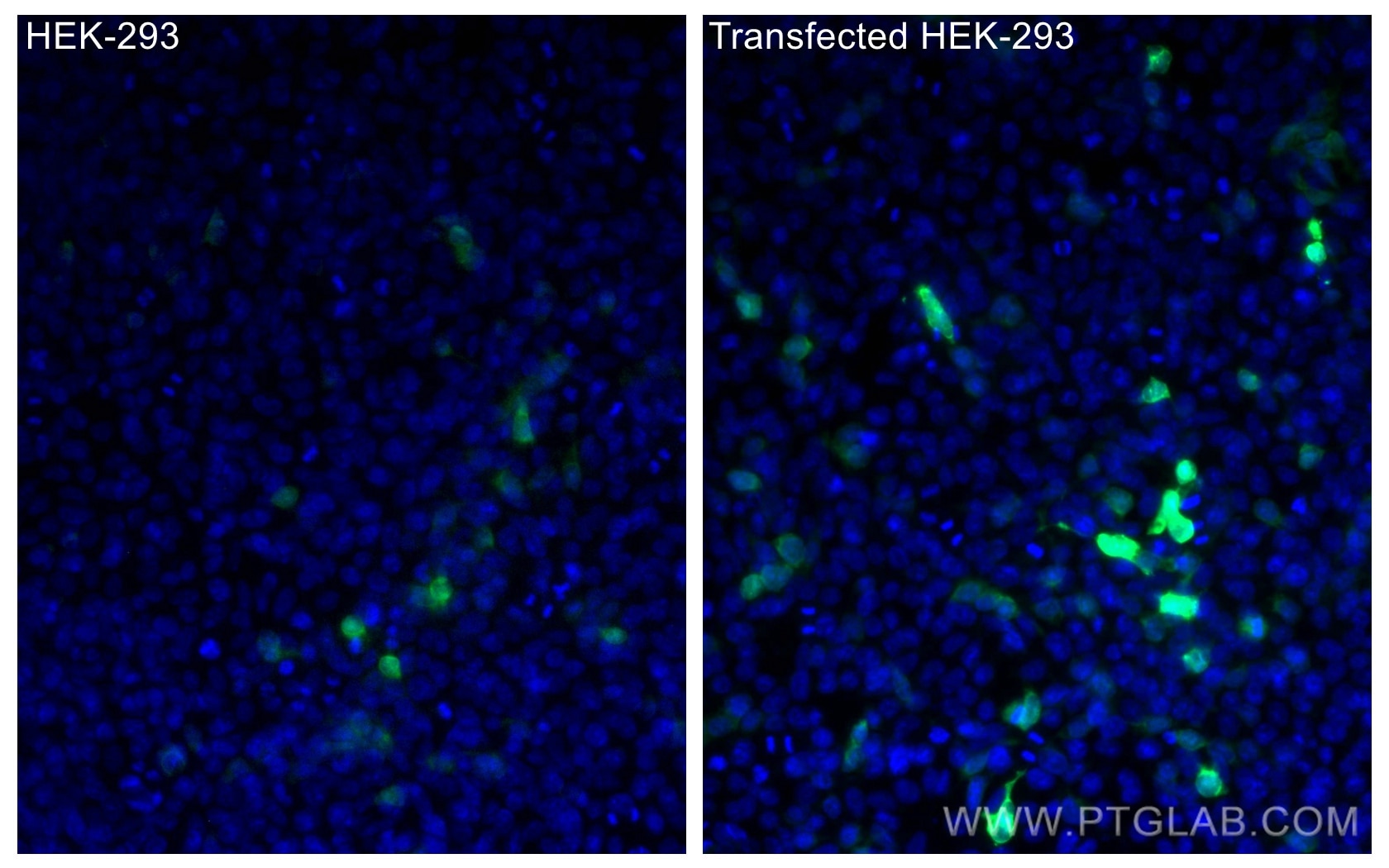Anticorps Monoclonal anti-GFP tag
GFP tag Monoclonal Antibody for WB, IF/ICC
Hôte / Isotype
Mouse / IgG2a
Réactivité testée
Protéine recombinante
Applications
WB, IF/ICC
Conjugaison
CoraLite® Plus 488 Fluorescent Dye
CloneNo.
1E10H7
N° de cat : CL488-66002
Synonymes
Galerie de données de validation
Applications testées
| Résultats positifs en WB | Protéine recombinante, |
| Résultats positifs en IF/ICC | cellules HEK-293 transfectées, |
Dilution recommandée
| Application | Dilution |
|---|---|
| Western Blot (WB) | WB : 1:2000-1:10000 |
| Immunofluorescence (IF)/ICC | IF/ICC : 1:50-1:500 |
| It is recommended that this reagent should be titrated in each testing system to obtain optimal results. | |
| Sample-dependent, check data in validation data gallery | |
Informations sur le produit
CL488-66002 cible GFP tag dans les applications de WB, IF/ICC et montre une réactivité avec des échantillons Protéine recombinante
| Réactivité | Protéine recombinante |
| Hôte / Isotype | Mouse / IgG2a |
| Clonalité | Monoclonal |
| Type | Anticorps |
| Immunogène | GFP tag Protéine recombinante Ag2128 |
| Nom complet | GFP tag |
| Masse moléculaire calculée | 26 kDa |
| Numéro d’acquisition GenBank | M62653 |
| Symbole du gène | |
| Identification du gène (NCBI) | |
| Conjugaison | CoraLite® Plus 488 Fluorescent Dye |
| Excitation/Emission maxima wavelengths | 493 nm / 522 nm |
| Forme | Liquide |
| Méthode de purification | Purification par protéine A |
| Tampon de stockage | PBS with 50% glycerol, 0.05% Proclin300, 0.5% BSA |
| Conditions de stockage | Stocker à -20 °C. Éviter toute exposition à la lumière. Stable pendant un an après l'expédition. L'aliquotage n'est pas nécessaire pour le stockage à -20oC Les 20ul contiennent 0,1% de BSA. |
Informations générales
Green Fluorescent Proteins (GFPs) encompass a diverse range of proteins carrying a green chromophore, originating from various species and forming different protein lineages.
Wildtype GFP consists of 238 amino acid residues (26.9 kDa). GFP was first identified in the jellyfish Aequorea victoria. It emits green light with a peak wavelength of 509 nm upon excitation by blue light at 395 nm.
When fused with other proteins, GFP serves as a versatile reporter protein e.g. for quantifying expression levels or facilitates visualization of subcellular localization through fluorescence microscopy.
This antibody is a mouse (IgG2a) monoclonal antibody against GFP reactive to GFP, eGFP, eYFP, YFP and CFP. This antibody is labeled with CoraLite Plus 488.
Protocole
| Product Specific Protocols | |
|---|---|
| WB protocol for CL Plus 488 GFP tag antibody CL488-66002 | Download protocol |
| IF protocol for CL Plus 488 GFP tag antibody CL488-66002 | Download protocol |
| Standard Protocols | |
|---|---|
| Click here to view our Standard Protocols |



